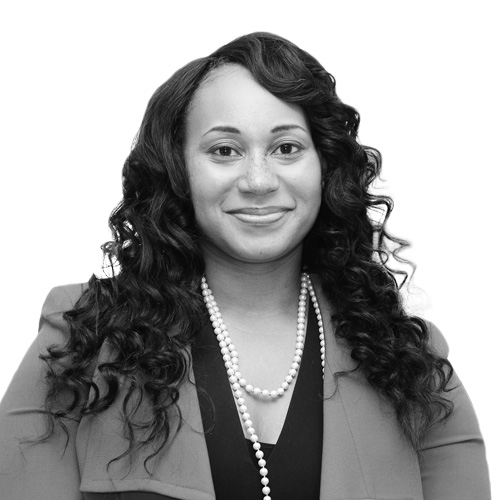Education is light years away from what it once was. Nowadays, implementing a technology plan to deliver education is a galactically important and challenging job. In a district like Cypress-Fairbanks, it’s an especially arduous task. The independent school district has 114,704 students and eighty-eight schools, making it the third largest school district in Texas and the twenty-third largest in the nation. As chief technology officer, Frankie Jackson develops and executes the tech strategies designed to give the students more opportunity while making teachers’ jobs better. Jackson has big goals for the big district. She’s asked her team to provide 24/7 access to digital teaching and learning through blended and virtual models that enhance and personalize the student experience. To do so, Jackson not only relies on the lessons she’s learned over two decades in K-12 education, but she also draws from her experience supporting space shuttle and station operations at NASA.
Before moving into the public education sector by accepting a CTO role with Goose Creek Consolidated Independent School District in 1994, Jackson spent ten years in software engineering at NASA, where she supported operations at the Johnson Space Center. As Jackson rose through the ranks over a decade in mission operations, she gained valuable training and experience not only in technical areas, but also in the renowned Malcolm Baldrige framework of quality and excellence.
In 1987—a year after the Challenger tragedy—the Reagan administration developed the Baldrige Criteria for Performance Excellence to stimulate the nation’s economy. Top organizations in many sectors, including healthcare, space, and defense, use the standards to drive organizational performance by focusing on fact-based knowledge, performance improvement, quality, measured results, and feedback. In 1993, Jackson worked on a project on a team of seven that became a finalist for the prestigious Malcolm Baldrige National Quality Award, which recognizes performance excellence. Her specialty in the application was on the leadership category.
By the end of 1993, Jackson was a program manager for NASA’s top quality and safety areas. The next year, while working for Unisys as part of the space transportation shuttle operations contract, Jackson led the company to win the George M. Low Award for Quality and Excellence.
“I approach public education using the mind-set that I left NASA with.”
Although she found the work to be rewarding, Jackson wanted to find more time for her growing family. That desire led her to accept her first position in public education and put her on a new path—one where she uses the technical skills and quality management principles learned at NASA to bring a different style of leadership and a different level of results.
Jackson joined Cypress-Fairbanks in 2013, and she now works alongside nationally respected leaders, such as superintendent Dr. Mark Henry, who has turned the district into one of the nation’s top academic and financial performers. In May of 2014, Cypress-Fairbanks district voters approved a $1.2 billion bond referendum for safety and security improvements, new construction, renovations, and transportation. The referendum also included $217 million for upgrades to classroom technology and district infrastructure. Following the vote, Jackson began implementing a 2020 plan to install ubiquitous high-speed wireless access, to expand Internet availability, and to implement other measures that will change how students engage through blended and personalized learning.
Inspiration For Success
Other than the romance associated with working in the space program—she kept the flight crew patch and other mementos from each shuttle launch—Frankie Jackson remembers the team approach she saw in action at the Johnson Space Center. Every month, team members gathered to discuss projects and results. During the month, they posted pictures and stories on a small, shared bulletin board. Communicating results over time inspired those in the space program to strive for continued excellence. The practice, started in the 1980s, was a precursor for the websites and digital platforms Jackson now uses to inspire and motivate her teams at Texas’s Cypress-Fairbanks Independent School District.
As she rolls out the plan, Jackson is employing the Baldrige principles. In fact, she was first hired in part for this experience and leadership philosophy. “When I joined public education, the hiring manager reminded me not to change anything about myself,” Jackson says. “I approach public education using the mind-set that I left NASA with.”
Although professionals in other industries have accepted the Baldrige criteria, they were relatively new in education. Jackson has taught the methods to her peers and counterparts in public schools. The methodology is based on communication, strategic planning, customer needs, measurement, and analysis, and it has yielded dramatic results in education. Jackson is confident that it will help her drive her 2020 technology plan at Cypress-Fairbanks. When she left NASA in 1993, she was using the steps to support mission critical operations on space stations and space shuttles. Now, her team uses the same approach to support mission critical systems like student attendance, student safety, and grade reporting.
The entire framework is now embedded in all department projects and activities. If Jackson’s team receives a complaint about a repair request response time, they simply mine data gathered from previous years, compare the results, and respond or adjust accordingly. “Speaking from quantifiable results brings instant credibility,” Jackson says. “It would be nearly impossible to manage a district of this size without good data.” By taking this approach and faithfully executing it on all tasks, her department has a significant impact on the large system. Jackson also uses the Consortium of School Network’s Certified Education Technology Leader (CETL) framework to help her envision and successfully build twenty-first-century learning environments. As a CETL, Jackson collaborates and benchmarks with CTOs across the nation to help support her leadership.
Jackson works hard to make sure her staff is up to the challenge. “You can have all the money in the world, but when it comes down to implementation and quality, you have to have a great staff that buys into your vision,” she says. Leadership must set the expectations and communicate the plan. Everyone must feel like they’re accomplishing work that matters. Jackson says her biggest rewards come when a student’s eyes light up using Google Chrome, or when a child gets inspired by something they otherwise wouldn’t see on a field trip though Google Expeditions, which her team enabled in 2016. “I have to constantly remind my staff about what we’re doing to change the educational experience,” Jackson says. “It’s not wires and circuits; it’s systems that inspire students and prepare the next generation of leaders.”
She gets that message out through a robust district website unlike anything most educators have ever seen. There, employees, students, educators, and the public can find stories, photos, and videos that illustrate Jackson’s point. Each department has its own page, and leaders and staff members upload materials that showcase their activities. Teachers might snap a few pictures of their class working on tablets, or administrators might upload a video of tech pros providing cameras on buses. When tech professionals log on, they can see students interacting with what they built. Jackson calls it a priceless motivator and adds that her team is always motivated and excited when they can see their contribution come to life in the field.
To date, Jackson’s team has spent $60 million on Cypress-Fairbanks’ technology infrastructure network and has $30 million left to go. But that’s just the tip of the iceberg. In 2017, IT will continue installing devices and components that will bring about Jackson’s vision for 24/7, blended learning as she and her team break down the walls and provide better educational opportunities through technology.

